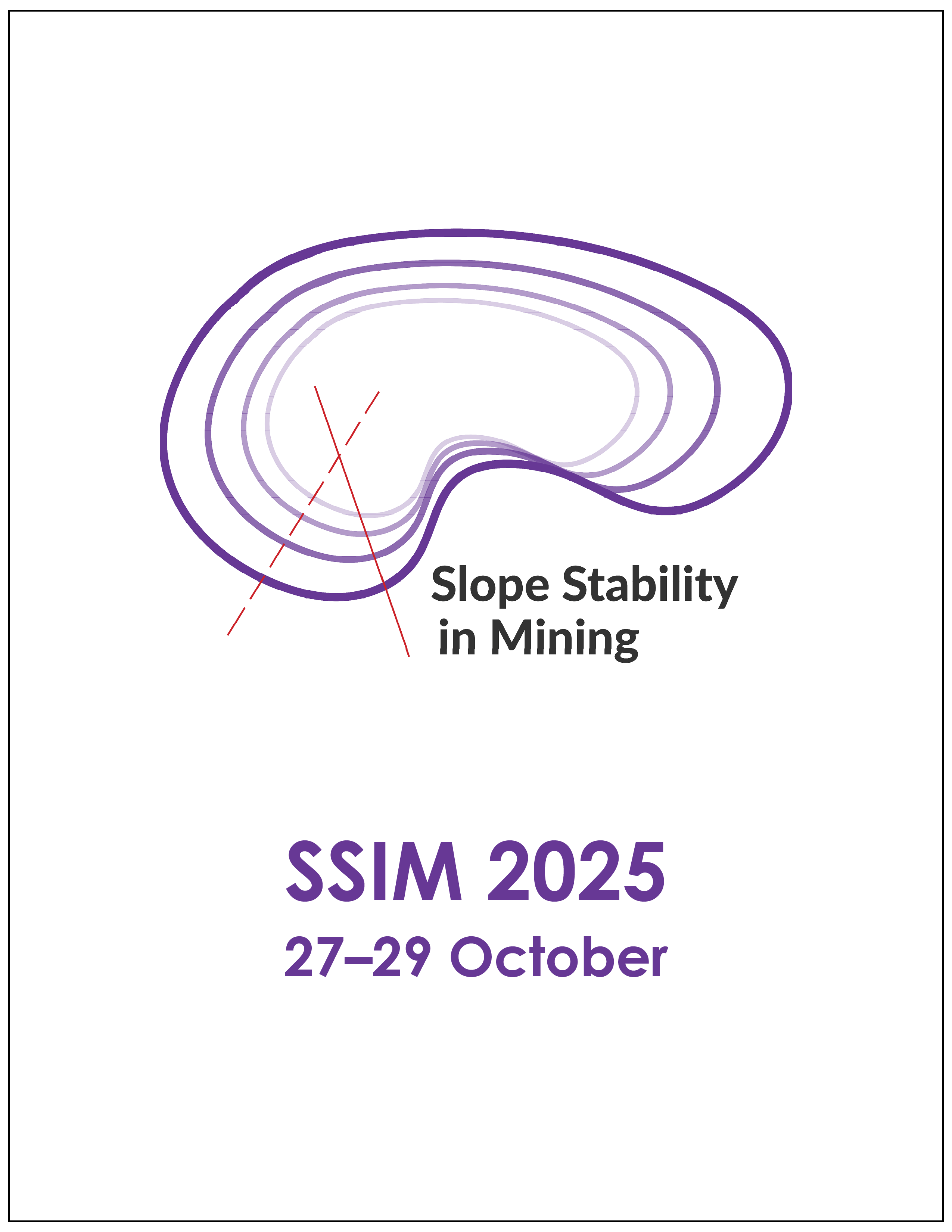Preliminary expansion of the Modified Ritchie Criterion: an empirical approach to determining minimum bench widths for rockfall catchment

|
Authors: Warren, S; McNabb, JC; Meyer, BJ; Potter, JJ; Sbai, S; Reasoner, AE; Ryan, T |
DOI https://doi.org/10.36487/ACG_repo/2535_04
Cite As:
Warren, S, McNabb, JC, Meyer, BJ, Potter, JJ, Sbai, S, Reasoner, AE & Ryan, T 2025, 'Preliminary expansion of the Modified Ritchie Criterion: an empirical approach to determining minimum bench widths for rockfall catchment', in JJ Potter & J Wesseloo (eds), SSIM 2025: Fourth International Slope Stability in Mining Conference, Australian Centre for Geomechanics, Perth, https://doi.org/10.36487/ACG_repo/2535_04
Abstract:
The Modified Ritchie Criterion (MRC) is a widely utilised tool used for catch bench design in the mining industry. The MRC, based on Ritchie’s 1960s highway rockfall catchment studies and later adapted for mining applications,defines the minimum required catch bench width (CBW) as CBW = 0.2(bench height) + 4.5 m. While the criterion has been utilised successfully for decades, experience and research has shown that rockfall rollout is a complex problem, and the determination of the required minimum rockfall catch bench width is a function of more variables than bench height alone. This paper quantifies the effect of factors such as rock size and catch bench angleon rockfall rollout distance using multivariate regression on a rockfall dataset developed by the Oregon Department of Transportation in 2001.Results indicate that rockfall rollout distance and catch bench performance are functions of multiple variables, including bench height, bench face angle, rock size, and catch bench angle.Several empirical regressions are presented for determining catch bench widths with 90% rockfall retention – a commonly applied performance metric in the mining industry. The regressions are used to propose a preliminary datasupported expansion of the Modified Ritchie Criterion (termed EMRC). This potentialexpansion accounts for variations in bench face angle, reducing minimum catch bench width for bench face angles steeper than 65°, and increasing minimum catch bench width for bench face angles shallower than 65°.
Keywords: rockfall, rollout, runout, catch bench design, slope design
References:
Alejano, LR, Pons, B, Bastante, FG, Alonso, E & Stockhausen, HW 2007, ‘Slope geometry design as a means for controlling rockfalls in quarries’, International Journal of Rock Mechanics and Mining Sciences, vol. 44, no. 6, pp. 903–921,
10.1016/j.ijrmms.2007.02.001
Bourgeois, J, Warren, S & Armstrong, J 2023, ‘Utilization of statistical analysis to identify influential slope parameters associated with rockfall at open pit mines’, Mining Metallurgy & Exploration, vol. 40, no. 4, pp. 1101–1112.
Call, R 1986, ‘Cost–benefit design of open pit slopes’, Proceedings of the 1st Open Pit Mining Symposium, pp. 1–18.
Evans, C 1989, The Design of Catch Bench Geometry in Surface Mines to Control Rockfall, MSc thesis, The University of Arizona, Tucson.
Gibson, WH, de Bruyn, IA & Walker, DJH 2006, ‘Considerations in the optimisation of bench face angle and berm width geometries for open pit mines’, International Symposium on Stability of Rock Slopes, The South African Institute of Mining and Metallurgy, Johannesburg.
Gonzaga, G, Rose, N & Veillette, M 2016, ‘Rockfall catchment investigations for the upper west wall of the Valley Pit’, CIM Convention, Canadian Institute of Mining, Metallurgy and Petroleum, Westmount.
Lorig, L, Stacey, P & Read, J 2009, ‘Slope design methods’, in J Read & P Stacey (eds), Guidelines for Open Pit Slope Design, CSIRO Publishing, Collingwood, pp. 237–263.
Mattern, J 2019, ‘Using slope design fundamentals and technology for slope steepening on a final wall at the Goldstrike open pit’, Mining Engineering, vol. 71, no. 2.
Nagera, B 2022, Bench Design Workflow Analysis and Acceptance Criteria in Open Pit Mines, MSc thesis, University of Alberta, Edmonton.
OriginLab 2024, OriginPro 2024, version 2024b, computer software.
Pierson, L, Gullixon, F & Chassie, R 2001, Rockfall Catchment Area Design Guide, report FHWA-OR-RD-02-04m, Oregon Department of Transportation, Salem.
Ritchie A 1963, Evaluation of Rockfall and its Control, Washington State Highway Commission.
Ryan T & Pryor P 2000, ‘Designing catch benches and interramp slopes’, in W Hustrulid, M McCarter & J Van Zyl (eds), Slope Stability in Surface Mining, Society for Mining, Metallurgy, and Exploration, Littleton.
Warren, S, Bourgeois, J, Sbai, S & Lasich, T 2024, ‘Revisiting rockfall catch bench design guidelines: test results from Bald Mountain Mine, NV, USA’, Proceedings of Slope Stability 2024, Brazilian Geotechnical Society, Belo Horizonte.
© Copyright 2025, Australian Centre for Geomechanics (ACG), The University of Western Australia. All rights reserved.
View copyright/legal information
Please direct any queries or error reports to repository-acg@uwa.edu.au
View copyright/legal information
Please direct any queries or error reports to repository-acg@uwa.edu.au

